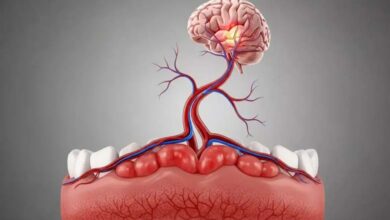Air Pollution Threatens Bone Health in Postmenopausal Women

Air pollution is a well-known global threat, often linked to respiratory diseases, cardiovascular conditions, and even mental health issues. However, a less-discussed but increasingly alarming consequence is emerging: the impact of polluted air on bone health, especially in postmenopausal women. At this life stage, women are already vulnerable to osteoporosis and bone fractures due to hormonal decline. New studies suggest that long-term exposure to airborne pollutants could further worsen bone fragility, introducing an environmental risk factor to an already complex condition.
Menopause and pollution: a dangerous mix
Postmenopause is marked by a significant drop in estrogen levels, leading to decreased bone mineral density. While this is a natural process, it can be aggravated by factors such as smoking, poor nutrition—and now, according to emerging evidence, by air pollution.
Recent epidemiological studies, including those published in The Lancet Planetary Health and Environmental Research, have shown a strong correlation between chronic exposure to fine particulate matter (PM2.5), nitrogen dioxide (NO2), and ozone, and lower bone density, particularly in older women. Postmenopausal women living in highly polluted urban areas are at increased risk for fractures, especially of the hip and spine.
-
Menopause Diet/Foods – How what you eat affects your symptoms
-
Givining: An Innovative Technique to Boost Runners’ Performance and Reduce Fatigue
Biological mechanisms involved
Long-term exposure to air pollutants triggers low-grade systemic inflammation, which disrupts bone metabolism by increasing osteoclast activity (cells that break down bone) and decreasing osteoblast function (cells that build bone). Furthermore, certain pollutants act as endocrine disruptors, worsening the hormonal imbalance caused by menopause.
The associated oxidative stress also affects collagen integrity and bone mineralization, making bones more porous and fragile.
-
A Simple Trick to Protect Your Eyes from Screen Fatigue
-
Hoarseness: A Symptom That Could Indicate a Serious Illness
Key data and findings
- A Columbia University study followed more than 9,000 postmenopausal women for a decade. Those living in areas with high PM2.5 concentrations had significantly lower bone density.
- Exposure to high NO2 levels increased the risk of hip fractures by 25%.
- The World Health Organization (WHO) reports that over 90% of the global population breathes air that does not meet safety standards, affecting millions of aging women.
Clinical and social implications
This connection between pollution and bone fragility calls for a rethinking of osteoporosis prevention strategies. Traditionally, osteoporosis has been addressed through diet, physical activity, and hormone therapy. However, environmental factors must now be considered a major risk factor.
In highly polluted cities across Asia, Africa, and Latin America, postmenopausal women represent an at-risk population often overlooked in public health policies.
-
“Le Monde”: Women Suffer More Psychologically Than Men Due to Work-Related Disorders
-
Sleep apnea: It could lead to cognitive impairment, study reveals
Solutions and prevention strategies
- Public policies: Enforce stricter regulations on industrial and vehicular emissions, especially near residential areas.
- Medical monitoring: Encourage regular bone density scans for urban-dwelling women.
- Personal protection: Promote use of air-filtering masks, indoor air purifiers, and improved home ventilation.
- Research: Fund interdisciplinary studies exploring air pollution’s impact on bone health.
- Awareness campaigns: Launch targeted information programs for aging women.
The bone health of postmenopausal women is not solely determined by genetics or nutrition—it is also shaped by the air they breathe. This invisible danger requires joint action from the scientific community, health authorities, and civil society. Environmental osteoporosis is no longer theoretical—it is a silent emergency demanding urgent attention.












